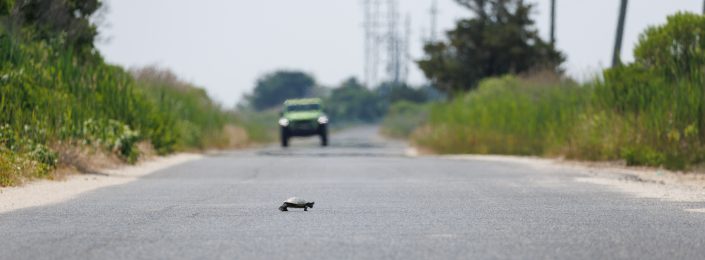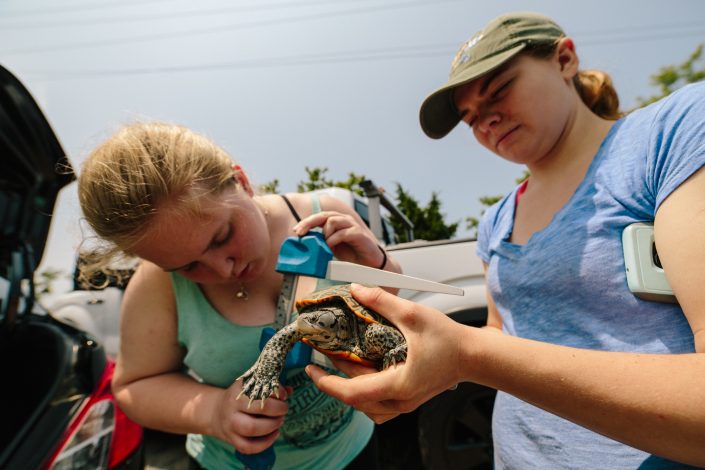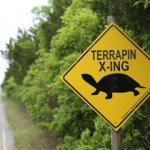Connecting the Spots: Field Research on New Jersey’s Spotted Turtles
A small cluster of gold glints below the water’s surface, moving carefully and purposefully through the matrix of underwater habitat. It is the shell of a Spotted Turtle (Clemmys guttata), a small freshwater dwelling turtle found across our state of New Jersey. I wasn’t kidding when I said Spotted Turtles are small, typically reaching around 3.5 to 4.75 inches at maturity! They inhabit a wide range of wetland habitats; including vernal pools that dry up in the summer, bogs, flooded fields, and even ditches. Their diet consists of mainly smaller aquatic animals, from amphibians and their eggs to invertebrates like worms and even aquatic plant material at times. The nature of their more generalist diet may make them opportunists, utilizing locally abundant food resources at different times of the year. An example of this could be wood frogs and their eggs, which are hyper-abundant in vernal pools in the early spring. The activity window for Spotted Turtles begins around this time and they may key in on Wood Frogs as a food source before moving on to the next abundant prey item. Spotted Turtles are sexually dimorphic, meaning you can visually separate adult males and females. Females have colorful lower jaws, flat plastrons, and shorter tails whereas males have drabber jaws, con-caved plastrons, and longer thicker tails.

Continue reading “Connecting the Spots: Field Research on New Jersey’s Spotted Turtles”













